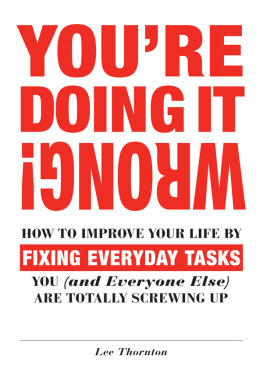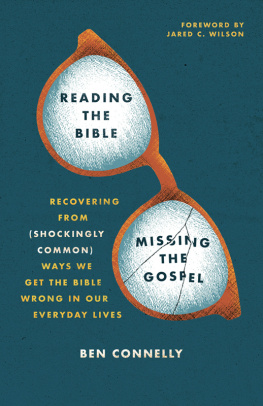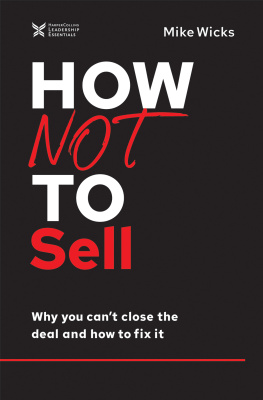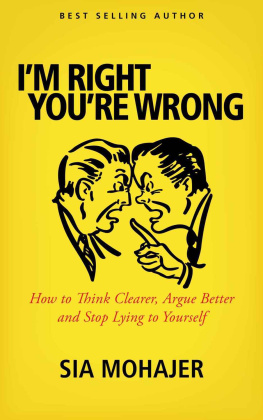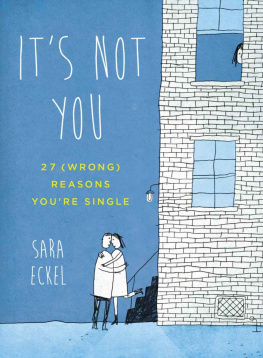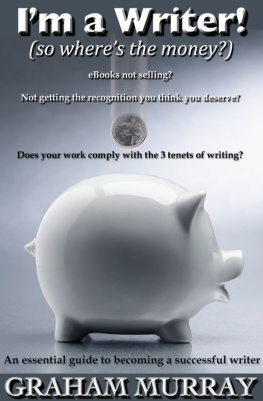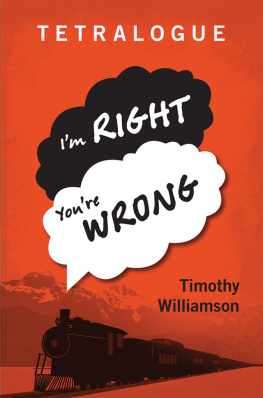We do things wrong all the time, of which we are well aware. We take shortcuts and risks, but they are often calculated, even subconsciously, as we weigh good and bad choices, and sometimes choose bad for time management, affordability, or even just for fun. The trouble comes in when we accidentally tip the scales, making bad choices we think are good! Not because were stupid, but because logic, experts, and beloved family members told us so. (Okay, for some people, its because theyre stupid.) Now you have this handy guide to help you out with those sticky issues. From airplanes and abs to watching 3D and winning, get ready to do it right!
Avoiding Germs
on an Airplane
HOW YOURE DOING IT WRONG
The air is just fine. Your tray table and aisle seat, on the other hand
Youre nestled upon your airplane pillow, in your aisle seat for easy access to the bathroom so you can wash your hands frequently to keep all those airplane germs at bay. This may shock you, Dr. Pasteur, but youre doing it wrong. In fact, youre probably exposing yourself to more germs than when using a sunbaked Porta-Potty at a summer music festival*. (*data pending)
How about if youre really hard-core about germs, and you brought a little mask to breathe through? If youve ever worn one for more than five minutes, you know how uncomfortable they get. But its worth it not to get sick, right? All the recirculated air is full of germs, right? Youve worked in an office, and you lived in a huge dorm. You know about these things. So you decide to go wash your hands and have a little snack on your tray table. The problem is, youre disgusting.
HOW TO DO IT RIGHT
Touch as little as possible, and move to the window seat
First of all, dont worry about the air; its the least of your problems (especially if youre actually wearing the surgeons mask). Airplane air is only partially recirculated. Boeings website states, of its commercial planes: Air circulation is continuous. Air is always flowing into and out of the cabin. That means most commercial buildings on the ground have dirtier air than your airplanes cabin.
Pillows and blankets are often recycled, so be sure to avoid those. A highly germ-laden surface is your seatback tray table. In a 2007 study, Jonathan Sexton found 60 percent of airplane tray tables were positive for Methicillin-resistant Staphylococcus Aureus (MRSA). Sexton recommends using antibacterial wipes on the tray before you even think about eating off it.
As for the hand washing, airplane bathrooms are crammed with contaminantssome studies found that even the running sinkwater itself occasionally contained fecal bacteria. The bathroom sinks are also loaded with bacteriatheir small size forces many people to touch the rims of the sinks with their dirty hands. If you have a short flight, use the restroom before you board and avoid the airplane bathroom entirely. If thats not reasonable, be sure to carry hand sanitizer with you, so you can sanitize even after you wash your hands.
Now on to that convenient aisle seatits the most dangerous choice when it comes to airplane germs, as it is touched the most and, therefore, is the most likely to have been contaminated. Studies by the Centers for Disease Control have found that in a plane in which some passengers are ill, the people sitting in the aisle seats were most likely to contract the same illness. Luckily, there are several ways to get yourself a window seat: book early, and confirm your seat when booking, and again when you check in. Join a frequent flier program, as seat selection is often part of the programs rewards. In some cases, you can upgrade your seat for a fee (Continental, JetBlue, and Virgin America all offer fee-based seat upgrades per flight, and United offers an annual fee option.) Get to the airport early to ensure you dont lose your spot, and if all else failsask. Remember to be nice to the often-maligned staff, and at the last minute, they may be able to move you into the seat of a no-show. If youre rude or demanding, theres very little chance they will go out of their way to help you.
Dont be shy about taking out the Handi Wipes and wiping down your surfaces, and using hand sanitizer, even if it makes you look a little neurotic. If youre concerned about the chemicals, tea tree or neem oil wipes from your local health food store are helpful. Dont forget the 3.4-ounce rule on liquids, so dont bring your jug of sanitizer from the BigLots store. You really dont need more than 3 ounces. If you doyoure doing it wrong. And hey, at least youre not wearing a mask!
Drinking Coffee
HOW YOURE DOING IT WRONG
Too much, too fast, too often
Mornings come easy to some people, but the rest of us drag out of bed and immediately look forward to a large coffee, and we keep chugging away throughout the day. Perhaps you prefer soda or iced tea, but every time you start to feel sluggish, its time for another hit of caffeine! But be warned: That delicious comfort drink of the ages is actually making you more tired.
HOW TO DO IT RIGHT
Slow and steady wins the race
Some doctors would say to cut caffeine out entirely, but lets be realistic here and listen to some professionals who advise how to do caffeine right: The secret is small amounts throughout the day.
The reason that first morning coffee feels so good is because youre actually avoiding caffeine withdrawal with each sip. A 2004 study at Johns Hopkins analyzed 170 years (seriously, that goes back to before the Civil War) of caffeine withdrawal information to discover caffeine withdrawal is an actual, medical thing. The delight a substantial caffeine user gets from that morning coffee is actually just a cessation of withdrawal symptoms.
As you go about your day, your body keeps building its store of adenosine, a nifty little enzyme that makes your body sleepy. Caffeine blocks this process. Sounds like you can fool your body ad infinitum and keep blocking those receptors and never sleep, right? Well, the problem with that is youre producing more sleepiness receptors if you drink caffeine on a regular basis. So youre stuck with more receptors that result in you waking up in the morning with your body complaining to you rather loudly that you really should sleep, not work.
Also, as you pump in more and more caffeine, it tells the nerve receptors to speed up. So although its great you got so much work done in the last hour, its a finite thingtoo much and youve crossed the fine line of neuron-firing. Your brain gets a signal that something is wrong, and now your pupils are dilated, your heart races, your airways open, and blood diverts to your muscles to aid you in your choice of fight or flight. And after that mess, youre going to be tired, in what is often called a caffeine crash.
Other studies have found the delicate balance between using caffeine and being used by caffeine.
A 2004 study by James K. Wyatt in the journal SLEEP found using small amounts of caffeine throughout the day to be the most effective for alertness, far more effective than ingesting a full cup in the morning and another shortly after, and another you get the idea. The recommendation that came out of this research: You should drink caffeine slowly.

